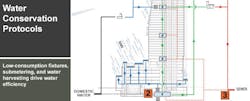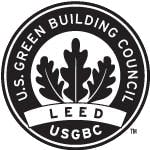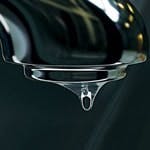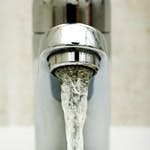Water Conservation Protocols
|
Water consumption in the United States increased by an estimated 12 percent between 1990 and 2000 – an increase of over 5 billion gallons per day. Of the water consumed, only about 14 percent is lost to evaporation, transpiration, or use in products or crops; most water is used, treated, and discharged into the nation’s water bodies.
Discharged water contaminates the receiving waters by increasing solids, nitrogen, bacteria, and toxic metals. Much has been done to help protect our rivers, lakes, and streams, but we have only begun. This article explains how water is used and produced in buildings and how to conserve it.
|
Chiller Upgrade Yields Cool Savings
World's Greenest Office High-Rise
Creating Sacred Spaces on Your Campus
Principles and Impacts of Daylighting
Computer Fire and Egress Modeling
Who's Who 2009: Leaders in Energy Management and Sustainability
The Importance of Existing Insulation Technology
Maintaining Your HVAC System
5 Steps for Smooth Tenant Relations
CO2 Monitoring Advances Quality and Energy Efficiency
| October 26, 2009 |
| This Week's Poll |
|
Are you using low-flow fixtures in your building’s washrooms? |
| Submit your answer online » |



























